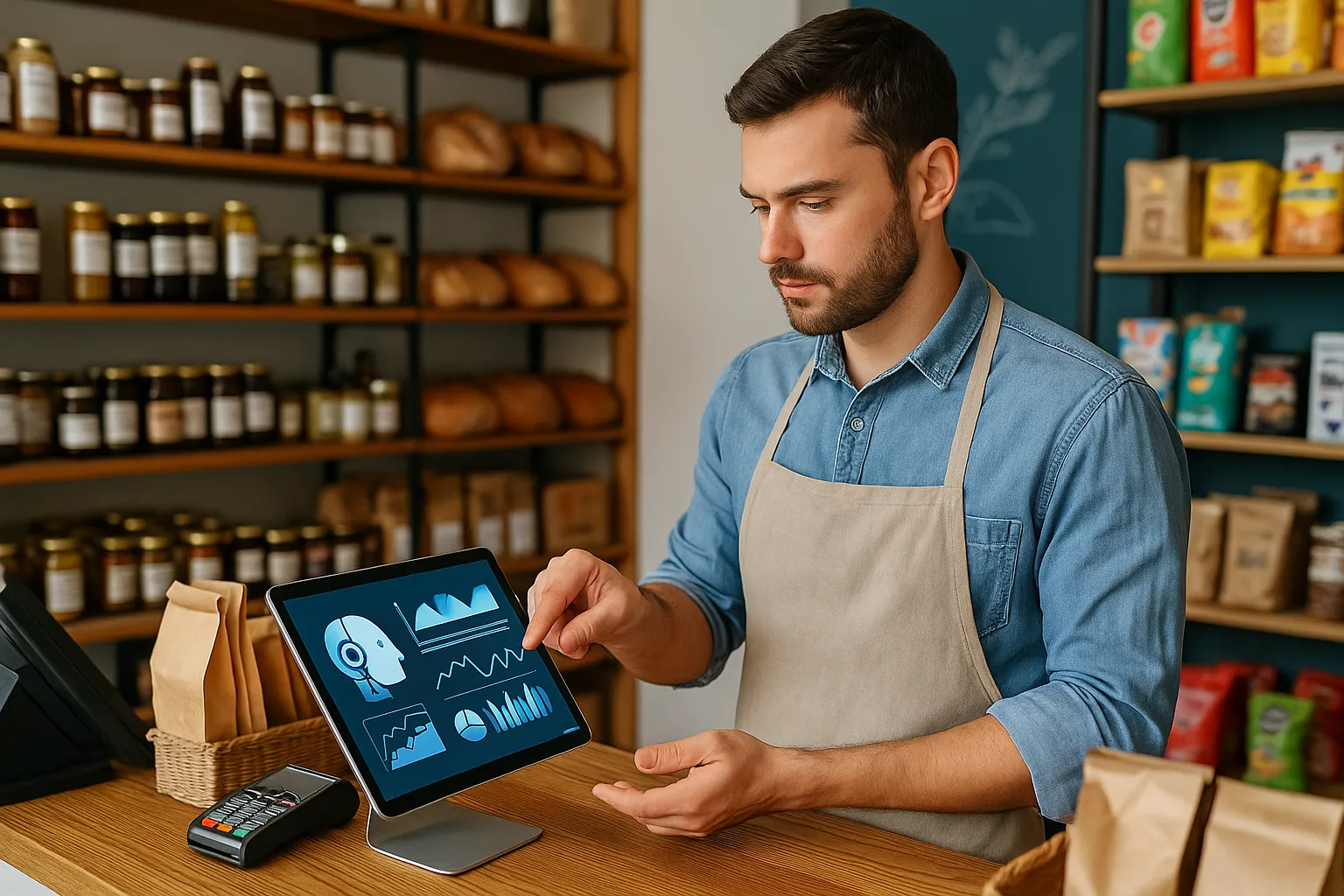Thursday
24 AprHow AI is Reshaping Local SEO for Small Businesses
Over the last few years, local SEO has started to feel different. You may have noticed your small business no longer shows up where it used to. Competitors seem to appear out of nowhere, ranking above you even if their services aren’t better. What changed?
The answer is AI. Search engines now use smarter systems that analyse not just what people type, but what they mean. They consider intent, context, and patterns. That means your digital presence needs to reflect how people actually search, not just what they type into Google.
This shift has quietly rewritten the rules for local visibility. And if you’re not adjusting your strategy, you could be losing out on valuable traffic.
In this guide, experts from H-Mag will show you how AI in SEO is changing everything from your content to your Google Business Profile. Ready to take control? Let’s dive in.
What Exactly Does AI Do for SEO?
Most small business owners don’t have the hours to spend on SEO. That’s where AI tools step in. They help you make quicker, smarter choices about your website, your content, and your visibility in search engines.
According to the Australian Government, Department of Industry, Science & Resources, 35% of Australian SMEs have adopted AI, but 23% don’t understand how to use it, and 42% don’t plan to at all.

Here’s how AI in SEO works in plain terms:
- Finds what your audience wants: Instead of guessing what people type into Google, AI tools look at trends and suggest what they are looking for. This helps you create content that speaks to real user intent.
- Builds a clear SEO plan: AI tools scan your website and compare it with top-ranking pages. You’ll get suggestions for headings, keywords, and layout. No guesswork involved.
- Saves time on content creation: Need a blog post or product page? AI-powered tools like Jasper and Copy.ai can create a draft quickly. You still tweak it, but it gives you a strong head start.
- Keeps your site aligned with Google’s expectations: Search engine optimisation isn’t just about keywords anymore. AI can help you meet the technical and content standards Google is using today.
- Shows what’s working and what’s not: Some tools break down your search engine rankings and show which updates improved traffic. That means less time wondering and more time improving.
For small businesses, this is like having a mini SEO team working in the background. It doesn’t replace your thinking. It supports it with speed and insights that fit into your day.
Making the Most of Your Google Profile
Struggling to show up in local search results? Even if your business is just around the corner, you might be getting missed. One common reason is a weak or outdated Google Business Profile.
This listing is often the first thing people see when they search for your business name or browse services in your area. A complete, well-managed profile increases your chances of appearing in the local map pack and standard search engine results pages.
AI tools can help with this. They can improve your descriptions, highlight missing details, and even suggest updates based on what’s working for other businesses nearby.
In addition, keeping your business account up to date helps Google understand what you offer. This can lead to better local rankings and more visits from your local community. You’ll also get data on user behaviour, such as which photos get clicks or what time of day people engage with your listing.
Quick ways to improve your profile using AI:
- Use AI tools to write a sharper business description
- Auto-generate answers to common local questions
- Track profile changes that improve seo performance
Summary: Your Google Business Profile is a core part of your online presence. When it’s accurate and engaging, it does more than show up.
Build Pages That Turn Visitors Into Customers
When Sarah, who owns a mobile dog grooming business in Melbourne, asked why her website wasn’t bringing in calls, we took a look. She had one homepage and a contact form.
There were no service pages, no suburbs listed, and no clear flow to help visitors take action. Her site looked nice, but it wasn’t working.

Many small businesses are in the same boat. A good-looking business website won’t do much if it doesn’t guide visitors toward the next step. That’s where landing pages come in.
- Build separate landing pages for each service and location. If you serve both Brighton and St Kilda, give each one its own page. This helps boost your website’s visibility in local search and gives customers content that feels specific to them.
- Use AI insights to shape the page around user intent. If people are searching for “last-minute dog wash,” the page should lead with availability and make booking easy.
- Break up content so it’s simple to read. Use short paragraphs, subheadings, and bullet points. On-page optimisation also means removing clutter and helping people find what they need fast.
- Platforms like SurferSEO or PageOptimizer Pro offer content optimisation tips that work. They guide your wording, keyword use, and layout in ways that improve both clarity and search performance.
With the right pages in place, your business website can do more than exist. It can convert visits into bookings, emails, or calls without needing a full-time marketing team.
Writing Local Content That Sounds Human
Content that feels personal and easy to read is more ideal candidate to connect with your audience. If you’re running a local business, the way your pages sound can make a big difference in how people view your brand. AI tools can support your content creation, but your input keeps it authentic.
1. Add a local feel to your content
You can guide AI-powered tools to sound more like your region. Add details about the areas you serve. Mention street names, suburbs, or even the kind of weather locals deal with. These touches make your writing feel grounded and build trust with people nearby. When customers see something that sounds familiar, they’re more likely to stay on the page.
2. Speak in plain language
Simple words work best. People are usually scanning your page, not studying it. If you’re explaining a service or product, try saying it the same way you’d explain it to someone in your store. This style supports small business marketing by creating a connection, not just showing information. Clear, relevant content also helps you rank better for local searches.
3. Let AI support, but keep your voice
AI-driven SEO platforms like Frase or SurferSEO can generate headings and outlines, and suggest relevant keywords. They’re useful, especially when you’re pressed for time. But before you publish, go through the content carefully. Add your voice, replace anything that sounds stiff, and include real examples. This balance keeps your content sounding human, even if a tool helped create it.
4. Refresh older pages so they stay current
Your business changes, and your content should change with it. So, review old blog posts or service pages every few months. Add new answers to common questions, mention recent projects, or include new offers. Use content optimisation tools to spot gaps. These updates help your seo efforts stay strong and ensure your content remains relevant.
Smarter Link Building Starts with Research
Getting your business listed on trusted websites can lift your search engine rankings and drive more traffic. That’s what link building is all about. It helps you earn mentions and backlinks from places your audience already visits.
The first step is market research. Look for other websites that share your audience. Local blogs, news outlets, business directories, and event listings are all good places to start. These are the kinds of sites that help search engines recognise your business as relevant and trustworthy.
To make things easier, here are a few tools to try:
| Tool | What It Helps You Do |
| Postaga | Find websites and automate outreach emails |
| Buzzstream | Manage outreach and track link-building efforts |
| Surfer Audit | Identify missing backlinks and easy wins |
These tools are built to support your link outreach without wasting hours. Moreover, they help track progress, find new opportunities, and refine your link-building approach over time.
The ASBFEO reports that more than 2.6 million Australian small businesses rely on digital marketing. At the same time, complaints about unclear service outcomes have grown, including 96 formal disputes. This shows how important it is to build a clear seo strategy that delivers real results.
Let Data Drive Smarter Decisions
Tracking your results is one of the most important parts of any SEO strategy. Without it, you’re just guessing what’s working. That’s where data tools come in. They help you see what’s getting clicks, what’s slipping in search rankings, and where your website needs attention.
Modern platforms can now do more than show numbers. With machine learning algorithms built in, many tools provide suggestions, not just stats. That means you spend less time analysing reports and more time acting on useful information.

Google Analytics is still unavoidable for tracking website traffic. But now, with GA4 and other AI-powered tools, you can dig deeper into user behaviour. These platforms help analyse vast amounts of data and deliver clearer views of how people are finding and using your site.
Here are a few things to check regularly:
- Pages with a drop in traffic or rankings
- Blog posts with high bounce rates
- Sources of your most engaged visitors
- New search trends your audience is following
- Which channels bring in the most leads
When you review this kind of data often, it becomes easier to make small updates that have a big impact. Over time, these changes help you stay ahead of the competition and ensure your SEO efforts stay on track.
Bring AI Into Your Marketing Without Overthinking It
Getting started with AI in SEO doesn’t mean becoming a tech expert. All you need to do is pick one tool or idea that saves time or helps your business get found more easily online. These tools can enable businesses to act faster, improve results, and get more done without extra hours in the day.
You might begin with AI-powered landing pages or use content tools to attract customers with better blog posts. These changes are often cost-effective and lead to more relevant traffic and new customers.
At H-Mag, we break down tools and tactics like this. If you found this guide helpful, there’s plenty more where that came from. Take your next step with AI in SEO today! Visit H-Mag to learn more exciting things about AI and SEO.
